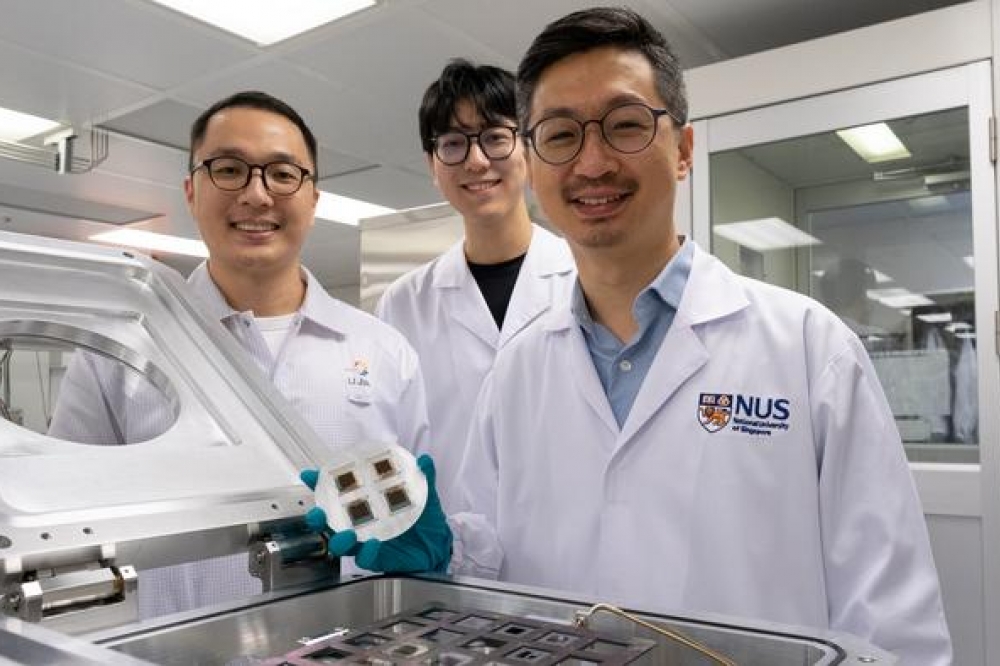Perovskite solar cells achieve record efficiency

1cm2 cells achieve stabilised efficiency of 24.35 percent
Perovskite solar cells designed by a team of scientists from the National University of Singapore (NUS) have attained a world record efficiency of 24.35 percent with an active area of 1 cm2. They say this achievement paves the way for cheaper, more efficient and durable solar cells.
To facilitate consistent comparisons and benchmarking of different solar cell technologies, the photovoltaic (PV) community uses a standard size of at least 1 cm2 to report the efficiency of one-sun solar cells in the Solar Cell Efficiency Tables. Prior to the record-breaking feat by the NUS team, the best 1 cm2 perovskite solar cell recorded a power conversion efficiency of 23.7 percent.
“To address this challenge, we undertook a dedicated effort to develop innovative and scalable technologies aimed at improving the efficiency of 1 cm2 perovskite solar cells. Our objective was to bridge the efficiency gap and unlock the full potential of larger-sized devices,” said Hou Yi, leader of the NUS research team comprising scientists from the Department of Chemical and Biomolecular Engineering under the NUS College of Design and Engineering as well as the Solar Energy Research Institute of Singapore (SERIS), a university-level research institute in NUS.
He added, “Building on more than 14 years of perovskite solar cell development, this work represents the first instance of an inverted-structure perovskite solar cell exceeding the normal structured perovskite solar cells with an active area of 1 cm2, and this is mainly attributed to the innovative charge transporting material incorporated in our perovskite solar cells. Since inverted-structure perovskite solar cells always offer excellent stability and scalability, achieving a higher efficiency than for normal-structured perovskite cells represents a significant milestone in commercialising this cutting-edge technology.”
The accomplishment was made by successfully incorporating a novel interface material into perovskite solar cells.
“The introduction of this novel interface material brings forth a range of advantageous attributes, including excellent optical, electrical, and chemical properties. These properties work synergistically to enhance both the efficiency and longevity of perovskite solar cells, paving the way for significant improvements in their performance and durability,” explained team member Li Jia, postdoctoral researcher at SERIS.
The results reported by the NUS team mark another milestone in advancing the commercialisation of a low-cost, efficient, stable perovskite solar cell technology. “Our findings set the stage for the accelerated commercialisation and integration of solar cells into various energy systems. We are excited by the prospects of our invention that represents a major contribution to a sustainable and renewable energy future,” said team member Wang Xi, an NUS doctoral student.
Another key area of focus for the team is to improve the stability of perovskite solar cells, as perovskite materials are sensitive to moisture and can degrade over time. Hou commented, “We are developing a customised accelerating ageing methodology to bring this technology from the lab to the fab. One of our next goals is to deliver perovskite solar cells with 25 years of operational stability.”
The team is also working to scale up the solar cells to modules to demonstrate their viability and effectiveness on a larger scale.
Reference
'Solar cell efficiency tables (version 62)'; Progress in Photovoltaics Research and Applications, 21st June 2023


































